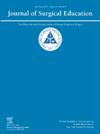Virtual Impressions: An Examination of OBGYN Programs’ Online Presence in the Match Process
IF 2.6
3区 医学
Q1 EDUCATION, SCIENTIFIC DISCIPLINES
引用次数: 0
Abstract
BACKGROUND
The COVID pandemic led to the transition of residency applications to a virtual format and the expansion of residency programs' virtual presence.
OBJECTIVE
The objective is to understand what information Obstetrics and Gynecology Residency interviewees prioritize and how influential program websites and social media platforms are.
STUDY DESIGN
Electronic surveys were sent to fourth-year medical students and OBGYN residents and were available for 6 weeks in spring 2023. All responses were anonymous and voluntary.
RESULTS
There were 198 survey respondents. From our cohort, fourth-year medical students, PGY-1, and PGY-2 residents had virtual interviews (71.2%) while PGY-3 and PGY-4 residents had in-person interviews (28.8%). Both virtual and in-person interviewees reported that the most important residency website information they were interested in included current resident profiles, rotation schedule, application cycle information, postresidency employment or match, and salary and benefits. Virtual interviewees were more interested in current resident profiles, salary and benefits, and video tours. Program websites and social media platforms were used by most, with virtual applicants accessing social media platforms more than in-person applicants (p < 0.001). Of those that interviewed virtually, when compared to those who interviewed in-person, there were more interest in resident profiles, salary and benefits, and video tours. Websites and social media were influential for all respondents, most significantly for virtual applicants (p < 0.001).
CONCLUSIONS
The recent shift to virtual OBGYN interviews has placed emphasis on residency programs' virtual presence. Our findings suggest that programs must be vigilant in providing a comprehensive view of their program in order to remain relevant and competitive.
虚拟印象:在匹配过程中对妇产科项目在线存在的检查:妇产科住院医师项目网站和社交媒体。
背景:2019冠状病毒病大流行导致住院医师申请向虚拟格式过渡,并扩大了住院医师项目的虚拟存在。目的:了解妇产科住院医师受访者优先考虑哪些信息,以及项目网站和社交媒体平台的影响力。研究设计:电子调查于2023年春季发送给四年级医学生和妇产科住院医师,为期6周。所有的回答都是匿名和自愿的。结果:调查对象198人。在我们的队列中,四年级医学生、PGY-1和PGY-2住院医师进行虚拟访谈(71.2%),而PGY-3和PGY-4住院医师进行面对面访谈(28.8%)。虚拟和面对面的受访者都表示,他们最感兴趣的住院医师网站信息包括当前的住院医师简介、轮岗时间表、申请周期信息、住院后的就业或匹配,以及工资和福利。虚拟受访者对当前居民的个人资料、工资和福利以及视频参观更感兴趣。大多数人使用项目网站和社交媒体平台,虚拟申请者访问社交媒体平台的次数多于面对面申请者(p < 0.001)。在那些接受虚拟采访的人中,与那些亲自采访的人相比,他们对居民简介、工资和福利以及视频参观更感兴趣。网站和社交媒体对所有受访者都有影响,对虚拟申请人影响最大(p < 0.001)。结论:最近转向虚拟妇产科访谈强调了住院医师项目的虚拟存在。我们的研究结果表明,为了保持相关性和竞争力,项目必须警惕地提供一个全面的项目视图。
本文章由计算机程序翻译,如有差异,请以英文原文为准。
求助全文
约1分钟内获得全文
求助全文
来源期刊

Journal of Surgical Education
EDUCATION, SCIENTIFIC DISCIPLINES-SURGERY
CiteScore
5.60
自引率
10.30%
发文量
261
审稿时长
48 days
期刊介绍:
The Journal of Surgical Education (JSE) is dedicated to advancing the field of surgical education through original research. The journal publishes research articles in all surgical disciplines on topics relative to the education of surgical students, residents, and fellows, as well as practicing surgeons. Our readers look to JSE for timely, innovative research findings from the international surgical education community. As the official journal of the Association of Program Directors in Surgery (APDS), JSE publishes the proceedings of the annual APDS meeting held during Surgery Education Week.
 求助内容:
求助内容: 应助结果提醒方式:
应助结果提醒方式:


